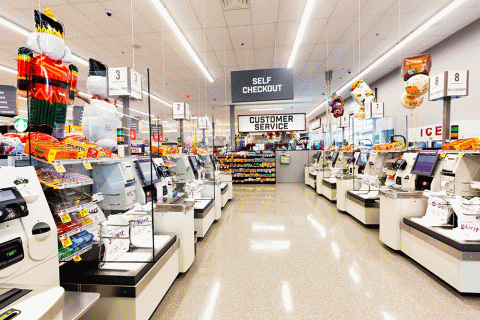Brands are avoiding checkout, costing nearly half their shoppers

Checkout has become synonymous with purchase in retail.
With 70% of shoppers abandoning their cart, retailers work on the assumption that once shoppers finally reach the checkout, they’re in the clear–a transaction is certain. What many fail to realize is that if the checkout experience isn’t optimized, shoppers won’t complete a purchase even if they’ve come this far.
Retailers are seeing nearly half (48%) of shoppers that start the checkout process drop off before completing their purchase. And the problem is even worse on mobile, with 58% of shoppersabandoning their purchase after moving from cart to checkout.
Retailers have avoided customization of the checkout itself for years–limited to a one-size-fits-all experience that is too costly, or risky to change. Assuming their hands are tied when it comes to checkout, retailers instead focus their time and budget on the details that will move shoppers to checkout (think product pages, color selectors, merchandising, trust-building and loyalty tactics).
This school of thought is now changing, and so are the limitations that previously kept the checkout on lockdown. Retailers simply can’t afford to lose nearly half their shoppers, especially those that have shown high intent to purchase.
To further contextualize the issues at checkout, we analyzed 3 million checkout sessions across a subset of the 90,000-plus brands Bold Commerce works with. The result is what we call the Checkout Benchmark, created for retail brands to compare their checkout performance against others and, ultimately, create a plan to improve their checkout completion rate.
Here are four insights from The Checkout Benchmark:
- Give shoppers what they need directly in the checkout–so they don’t have to veer away.
These days checkout is home to a lot more than the final transaction. It’s the last look at items in the order and decisions on shipping and delivery options, loyalty points/rewards and payments. Think about checkout as more of a place where a shopper ‘checks-in’ to make sure their order is exactly right, rather than a drive-thru.
What do shoppers need to edit during checkout? Delivery type, shipping address, quantities and offers are all evident from the data. In fact, mobile shoppers who convert to buyers are 41% more likely to review or edit their checkout than those that don’t convert. If the ability to do so only exists outside of the checkout stage, retailers risk drop off.
Instead of limiting shoppers to only move forward or bail, brands should make it easy and accessible for shoppers to review and revise in the checkout flow–two things that will increase, not decrease, their likelihood of conversion.
- Offer more payment options —but choose wisely.
From digital wallets like Apple Pay and Shop Pay, to buy-now, pay-later options like Klarna and Afterpay, shoppers have a growing number of payment options available. As the proliferation of payment players continues, PayPal remains a top choice for shoppers, serving as the payment option for 39% of all orders reviewed in the report.
Every shopper has their preferred method of payment, and with commodity purchases, some shoppers will abandon checkout and opt for a retailer that does offer it. When this happens, retailers not only lose that sale, but likely forego repeat purchases.
While retailers can’t (and shouldn’t) offer shoppers every payment option available, they can make the choice to support those that cater directly to their customer base. For instance, buy-now-pay-later (BNPL) options are most popular among younger generations, with nearly 75% of BNPL users being millennials or Gen Z shoppers. Retailers that choose wisely, as well as test and optimize their checkout flow with choice of payment methods can see their checkout completion rates rise.
- Create checkout experiences based on where shoppers are.
There is no universal answer to how many clicks and pages in checkout will maximize conversion. There are, however, distinct checkout flows and customizations that retailers can use to optimize checkout experiences for mobile, desktop and other channels.
Retailers should consider factors such as screen size, shopper context, and business model when contemplating what device-specific opportunities could look like to reduce friction and boost checkout completion.
For example, on desktop the checkout flow could include more features–such as expanded shipping and delivery options, BOPIS and loyalty widgets and additional product information–without introducing friction because there’s a larger screenscape. Alternatively on mobile, less is more in checkout, lending toward one-click experiences and easy payment access (think, Google Pay and Apple Pay) and BOPIS-default based on location.
- Go beyond the ‘free or fee’ shipping mindset.
Free shipping has always reigned as a top promotion for retailers. But increasing shipping fees and supply-chain pain has forced brands to rethink their approach to the free shipping debate.
Shipping fees have previously been portrayed as binary -- either free or fee -- but there is actually a sliding scale when it comes to what shoppers will accept for shipping fees. With zero shipping fees, checkout completion rates are at 56% for desktop and 45% for mobile.
As shipping fees increase by 10%, checkout completion rates fall 6% on desktop and nearly 4% on mobile. Retailers should prioritize shipping options such as shipping time and combining shipments, instead of shipping as items are available.
By opting for checkout optimization–instead of checkout avoidance–retailers can turn more of their browsers into buyers.





